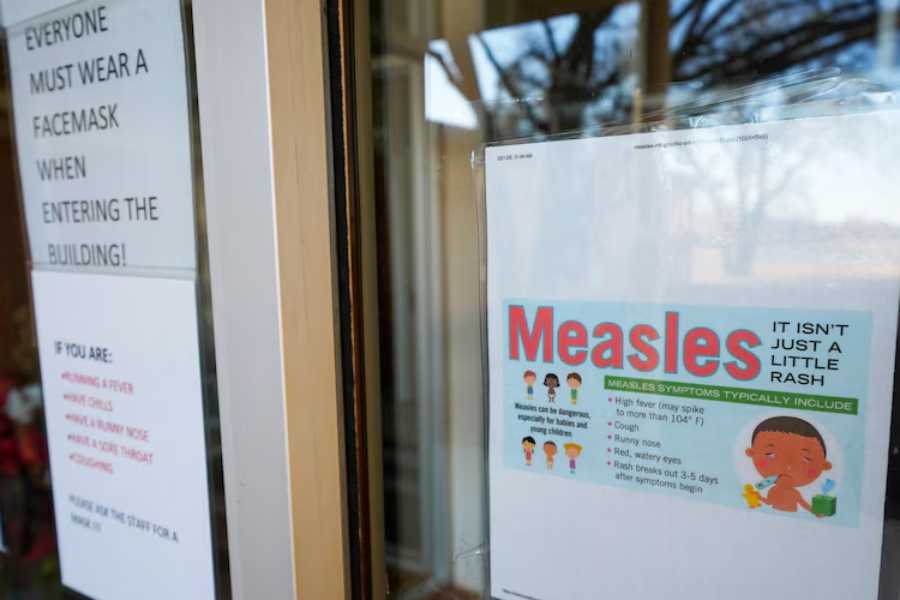A troubling measles outbreak continues to spiral in western Texas, pushing public health officials into crisis mode as the number of confirmed cases climbs to 561. With 20 new infections reported in just the last five days, the state is facing its worst measles flare-up in over a decade.
At the heart of the outbreak is Gaines County—a rural region bordering New Mexico, which alone accounts for a staggering 364 cases, making it the epicenter of this growing health emergency. The Texas Department of State Health Services (DSHS) confirmed these numbers Tuesday and warned that the situation could worsen before it gets better.
Mostly Unvaccinated or Unknown Status
Health officials emphasize that the vast majority of cases—over 95%—are among people who are either unvaccinated or whose vaccination status is unclear. Only four of the confirmed cases are in individuals who had received a single dose of the measles, mumps, and rubella (MMR) vaccine, while seven cases involve individuals who had received the recommended two doses.
“The data speaks for itself,” said Dr. Eleanor Miles, an infectious disease specialist based in Austin. “This outbreak is largely preventable. It’s a wake-up call for Texas and the rest of the nation.”
Hospitalizations and Tragic Deaths
Of the 561 cases, at least 58 people have been hospitalized—many of them children. Tragically, two school-aged children who were unvaccinated have died as a result of the outbreak, underscoring the potentially lethal nature of measles.
Health experts are particularly alarmed by the age demographics. Children and teenagers between 5 and 17 years old make up the majority of cases, followed by infants and toddlers under the age of four.
“The saddest part is that these deaths were entirely preventable with routine vaccination,” said Dr. Lisa Chan, a pediatrician in Lubbock. “We are watching a disease we had nearly eliminated in the U.S. make a comeback.”
CDC Warns of National Spread
The Centers for Disease Control and Prevention (CDC) has also sounded the alarm. As of Friday, the CDC has confirmed 712 measles cases across 24 states. Five of those states—Indiana, Kansas, New Mexico, Ohio, and Texas—have confirmed active outbreaks, which the CDC defines as three or more related cases.
“This isn’t just a Texas problem anymore,” said Dr. Anthony Brill, a CDC spokesperson. “It’s a national public health concern.”
According to the CDC, 97% of those infected nationwide are either unvaccinated or have an unknown vaccination status. Only 1% of national cases involve individuals with one MMR dose, and 2% with two doses—demonstrating the vaccine’s high effectiveness.
How Effective Is the MMR Vaccine?
Measles is one of the most contagious viruses known to science. A single infected person can spread the virus to up to 90% of unprotected individuals nearby. Yet, thanks to the MMR vaccine, the disease was declared eliminated in the United States in 2000.
But the resurgence of measles raises red flags about declining vaccination rates in recent years. The CDC notes that one dose of the MMR vaccine is 93% effective, while two doses are 97% effective at preventing infection. The current vaccine schedule recommends the first dose be administered between 12 to 15 months of age, and the second dose between ages 4 to 6.
Importantly, adults who received both doses during childhood typically do not need a booster.
Why Is Vaccination Coverage Falling?
Public health researchers cite multiple factors contributing to falling vaccine rates, including vaccine misinformation, pandemic-era disruptions to routine healthcare, and growing anti-vaccine sentiment in some communities.
In Texas, which has some of the most lenient exemption laws in the country, these factors have combined into a perfect storm. School districts in several counties have reported a surge in exemptions for “personal belief” reasons, which has left many schools vulnerable to outbreaks.
“Communities with lower vaccination rates serve as kindling for outbreaks like this,” said Dr. Maria Sanchez, an epidemiologist with the University of Texas Health System. “When immunity drops below a certain threshold, herd protection collapses—and that’s what we’re seeing now.”
Local and Federal Response
The DSHS is coordinating closely with local health departments and the CDC to contain the spread. Contact tracing, school-based vaccination clinics, and public awareness campaigns are underway in outbreak areas. Officials say that new cases are likely, given the highly contagious nature of the disease and the mobility of infected individuals.
Schools and daycares in affected counties are also taking precautions. Some districts have temporarily excluded unvaccinated students from attending in-person classes, while others are encouraging voluntary testing and symptom screening.
Meanwhile, the CDC continues to monitor and support the situation at the federal level. It has issued renewed guidance urging parents to ensure their children are up to date on routine vaccinations, especially as summer travel and camp season approaches.
A National Wake-Up Call
Health officials say the current outbreak serves as a grim reminder of the consequences of vaccine hesitancy.
“Measles is not a benign illness,” warned Dr. Miles. “It can lead to pneumonia, encephalitis, and death, especially in young children. We have the tools to prevent this. We just need the will.”
The CDC and Texas health authorities are urging parents and guardians to consult with pediatricians and get their children vaccinated immediately if they haven’t already.
As Gaines County and the rest of Texas fight to contain the outbreak, the hope is that this crisis prompts a renewed commitment to public health and science-based practices.

